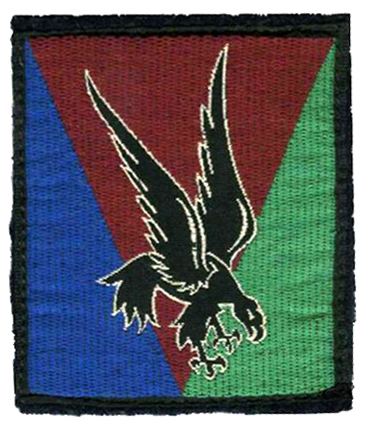Active 1956–1961 | Country France | |
 | ||
Type French Parachute Division Anniversaries Saint Michael, September 29 Engagements Suez CrisisAlgerian War | ||
The 10th Parachute Division (French: 10e Division Parachutiste, 10e D.P) was a formation of the French Army, part of the French Airborne Units. It consisted predominantly of infantry troops. It specialized in airborne combat and air assault. Established in 1956, it fought primarily in the Suez Crisis and the Algerian War. It was dissolved immediately after the Algiers putsch of 1961.
Contents
Composition
On July 1, 1956, the 10e D.P. is created with the following units:
Note: On the 1 December 1958, the "Colonial infantry" was renamed "Marine infantry".
Operation Musketeer
Barely created, the 10e D.P. took part in the Suez Crisis in Egypt, in an operation named "Operation Musketeer". The 10e D.P was reinforced for this purpose with:
On the 5 November 1956, elements of the 10e D.P. were dropped on Port Fuad and Port Said, completed the next morning by amphibious assaults on both towns. Although the battle was a military success, allied troops had to withdrawn due to pressure from the United States.
Battle of Algiers
In Algiers, the National Liberation Front (FLN) was carrying out a wave of terrorist attacks an urban guerilla which made many casualties, mostly Muslim civilians. In January 1957, Robert Lacoste, Minister Resident in Algeria, reacted by giving full powers to General Massu over the Algiers area. Massu sent the 10e D.P. to search out, arrest and question FLN members. The battle of Algiers proved to be a clear success for the French military, with most prominent FLN leaders killed or arrested and terrorist attacks effectively stopped. However, the use of torture against some FLN members led to an increasing opposition to war in France and internationally.
Battle of the Frontiers
In 1956, the newly independent Republic of Tunisia was helping the FLN by smuggling weapons and men through its territory. The electrified fence known as the Morice Line was built up to prevent Algerian FLN guerrillas from entering the French colony of Algeria from Tunisia. The 10e D.P. was assigned to the surveillance of a portion of the electrified border, in order to intercept rebel bands that have managed to cross it. The Morice Line had a significant impact of the reduction of guerrillas activities by forces that originated from Tunisia. However, general Massu, the commanding officer of the 10e D.P. was relieved of his command as he criticized president Charles de Gaulle's actions.
Algiers Putsch
Despite the military successes, French Prime Minister Michel Debré's government started secret negotiations with the anti-colonialist FLN in order to grant independence to Algeria. French settlers and soldiers were stunned by this decision and a putsch was organized in Algiers. With the exception of the 3e RPIMa, the rest of the 10e D.P. supported the coup. When the putsch failed the 25e D.P. along with the 10e D.P. were dissolved and the 1er R.E.P was the only regiment disbanded.
Traditions
Except for the Legionnaires of the 1e REP that conserve the Green Beret; the remainder of the French army metropolitan and marine paratroopers forming the 11th Parachute Brigade wear the Red Beret.
The Archangel Saint Michael, patron of the French paratroopers is celebrated on September 29.
The prière du Para (Prayer of the Paratrooper) was written by André Zirnheld in 1938.
Insignias
Just like the paratrooper Brevet of the French Army; the Insignia of French Paratroopers was created in 1946. The French Army Insignia of metropolitan Paratroopers represents a closed <
